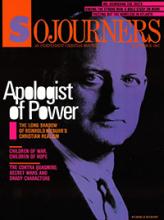No one can break into a strong man's house and plunder his goods unless the strong man is first bound; then the house may be plundered. - Mark 3:27
We have seen from Mark's prologue that the advent of good news shakes the foundations of life as usual (Mark 1:1-15). The day of the Lord, portended by the coming of Elijah, has dawned not by cataclysm, but in the practice of Jesus of Nazareth, who calls common people to join him in challenging the social order (1:15-28).
Mark now turns to sketch a portrait of Jesus' public ministry in and around the Galilean city of Capernaum. This first major narrative section begins (1:16f.) and ends by the shores of the Sea of Galilee (4:1). It articulates the character of the Messianic mission: healing and exorcism, proclamation and confrontation.
Read the Full Article

